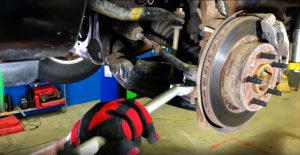
The pressing need to solve environmental issues and lower the carbon footprint of the automotive industry is causing the future of automobile design to become more and more focused on sustainability. The use of sustainable materials is one of the biggest developments in this field. Instead of using conventional materials like steel and plastic, manufacturers are looking at more environmentally friendly solutions including recycled aluminum, plant-based composites, and biodegradable polymers. These materials provide advantages such weight reduction, which may improve fuel economy and overall vehicle performance, in addition to lowering the production’s environmental effect.
Portable and Effective
The use of lighter materials is becoming more important in the design of sustainable cars. A vehicle’s emissions and fuel economy are directly impacted by weight reduction. Carbon fiber, a costly material that offers improved strength and lightness over conventional metals, is being used in the design of modern automobiles.
Aerodynamic Advancements
The future of automotive design will heavily rely on aerodynamics as these factors may greatly increase a vehicle’s performance and economy. More and more designers are concentrating on lowering drag in order to boost range and fuel efficiency, particularly for electric cars. Smoother curves and tapered profiles that facilitate easier airflow around the car are making sleeker, more streamlined designs the standard. To further enhance performance, active aerodynamic components are also being implemented, such as adjustable spoilers and air vents that open and shut dependent on driving circumstances. The Auto Repair Services in Grand Rapids, OH can address any complication regarding the same.
The Function of Electric Cars
One of the main forces behind innovation in sustainable automotive design is the growing popularity of electric cars (EVs). Since EVs must optimize battery range, aerodynamic efficiency is a natural advantage. Because of this, automakers are making significant investments in the creation of energy-saving aerodynamic designs.
Prospects and Difficulties for the Future
Future automotive design faces a number of difficulties in addition to great opportunities. The creation and incorporation of sustainable materials may be expensive and need large investments in novel production techniques. Similar to this, obtaining the best aerodynamic forms often calls for intricate testing and engineering. But because of their advantages—less environmental impact, higher performance, and more efficiency—the automobile industry has to pay close attention to these developments. Overcoming these obstacles and advancing the field of sustainable automotive design will need cooperation between producers, academics, and legislators.
Conclusion
The use of sustainable materials and aerodynamic forms is going to be critical to the future of automotive design. Eco-friendly materials and cutting-edge design strategies will be integral to the development of automobiles that not only meet the performance and aesthetic demands of contemporary consumers, but also become more efficient and ecologically friendly as the automotive industry develops. Accepting these developments will be essential to solving today’s environmental issues and laying the groundwork for a more sustainable vehicle design industry in the future.






